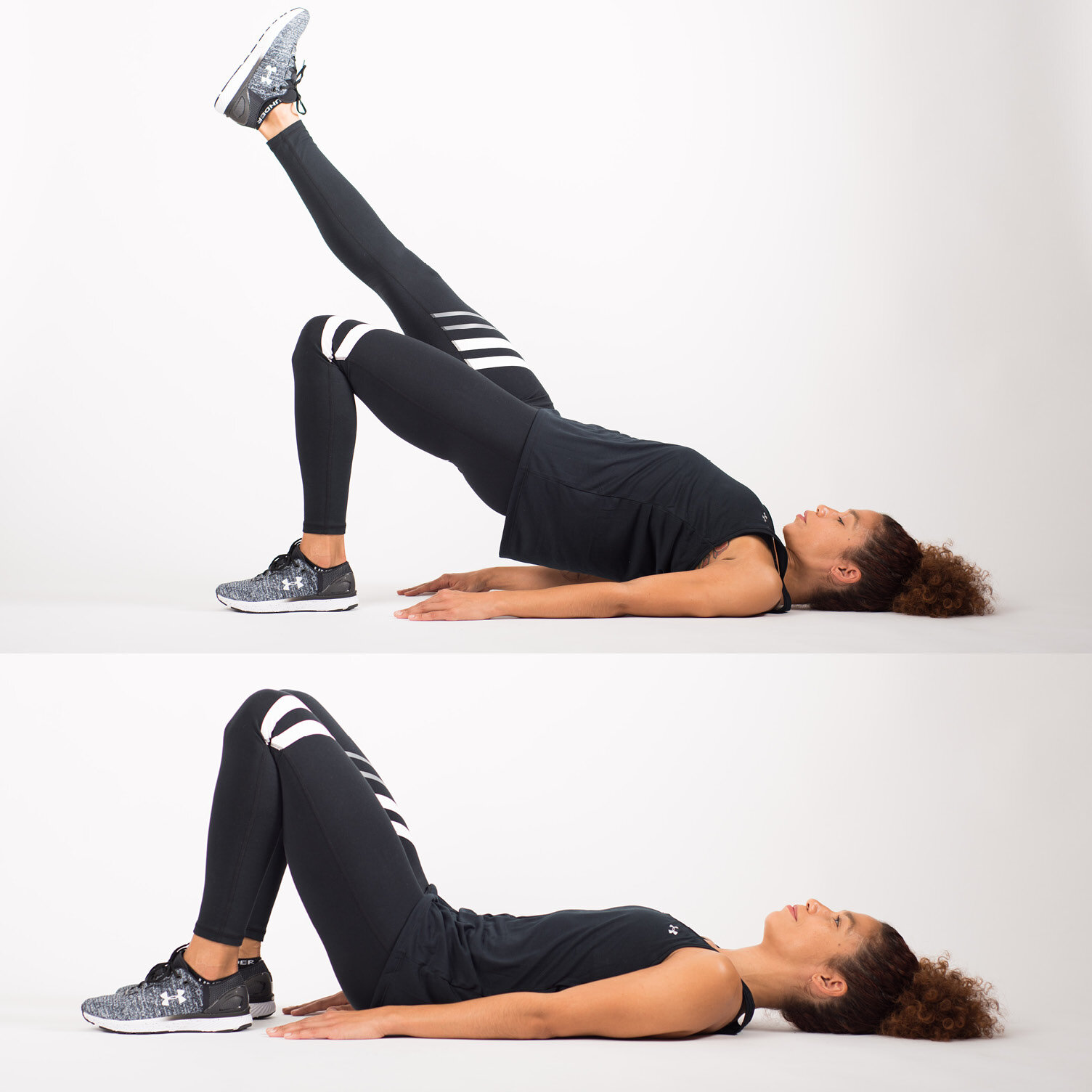The 5 Best Low Back Exercises for Pain
Low Back Exercises Walkthrough

Sitting all day at work sounds nice to some, but for the people that do, it usually invokes memories of constant pain towards the end of the day. In the two previous post of my low back series, I discussed a simplified version of low back anatomy and the leading causes of seated low back pain. If you haven’t check either of those out, they are short, to the point, and great building blocks for this article. In my previous post describing the leading causes of low back pain, I included ways to improve each of the areas of concern. Hence, why this post is focused more on exercises and long-term actions you can take to knock out the pain.
Why do I need to work on stability?
I hear this statement from a lot of patients, some of which are in great shape and others not so much. In both cases, they always ask the same question above. To that, I come back with, “That’s great that you work out, but are you working on the right muscles.”
Craig Liebenson has a spot on quote for this, “One of the most reliable predictors of recurring low back pain is the atrophy of endurance back muscles.” This transitions to one of my favorite analogies to use with patients below.
Picture the scenario of shooting a cannon from two different platforms, one of these platforms is built on solid concrete (a low back with endurance muscles) and a cannon placed on sand (an unstable low back). Over time which one do you think will perform better throughout the normal wear and tear?
Bingo, the one with the solid foundation! Any movement of the limbs initially starts with the spine, which is why a strong foundation is a key to improving overall movement.
Where to start?
Prevention is where we first start our journey on this road to decreasing your low back pain. Having the proper setup for your workstation is crucial in making long-term progress. You can do as many stabilization exercises as you want, but if you sit in a terrible chair with horrible screen placement, it’s all for not.
In previous posts, I broke down each piece of equipment ranging from your chair to the proper mouse positioning. Rather than run through each bit of equipment in this post I will link them here to peruse at your leisure.
The most critical tidbit for preventing seated low back pain(in my medical opinion) is to have your chair at a 95-110 degree angle. This seemingly random angle range takes pressure off the lumbar spine discs and is still neutral enough for minimal strain on the lumbar musculature.
Exercises for low back pain
Before we start trying to plank on everything, most individuals need to start with simple range of motion (ROM) exercises. We begin here to test the amount of movement you can tolerate, but also to start the process of warming up the muscles.
ROM of the lumbar spine, for example, is forward flexion, slight extension, side to side motion. Below I’ve included a picture of what I mean by ROM. These illustrations go to the extreme ranges so don’t feel like you need to begin here. After we have a baseline of movement and warm-up, we can begin with the simple stabilizing exercises.
With all of these exercises, make sure you are cleared to do these by a chiropractor, physical therapist, or medical doctor before jumping into trying these.
Engaging your Core
In my previous posts, I explained some of the key “core muscles” and how they affect your movement. If you need a refresher on these guys, I will link the post here.
We have all heard the saying “engage your core” or “activate your core,” but many people have no clue how or what the heck that means. There are a couple of different schools of thought on whether engaging your core means “barrelling” (explained later) or “hollowing” where you draw in your belly button to your spine.
The goal of hollowing is to activate the transverse abdominis, which is a spinal stabilizer. I’m not a fan of this thought process not only from what I was taught but also what I have read throughout my experience. Even when I perform hollowing on myself to test engagement, I still feel as though my core is lacking stability.
My thought on the topic is the complete opposite of hollowing, which is called abdominal bracing or “barrelling.” The premise here is to act as if you are about to be punched and brace your abdomen. By doing this, you will create a barrel type shape with your midsection, which allows you to have a strong foundation for movement.
An important note here is to make sure you are breathing while performing this action. To breath while “barreling” you will be using your diaphragm muscle (most people rarely use this while breathing) which allows you to perform deep inhalation. This bracing will be the foundation for most of the exercises coming up. Master this portion first before you move on to the more advanced exercises coming up. If you have questions make sure you ask me below in the comments or email me.
Cat-Camel Exercise
This is one of my all-time favorite exercises to mobilize and stretch my spine. It’s a simple motion that provides relief, mobilization, stretching, and even some strengthening components to the table.
This isn’t a motion you want to try to “push” yourself or try to go to extreme end ranges with. Cat-Camel is meant to be an exercise that provides movement to the spine with minimal effort from you.
The Bird Dog
Photo credit Popsugar
This is a classic “core” exercise that teaches movement patterns, stability training, and builds muscle endurance. Start in the position in the picture above.
Begin with moving your arm and the opposite side leg into the position below. Your body and most notably your hips should not rotate with this movement.
The bird dog exercise works on the gluteal group, deltoids, trapezius, and multifidi group.
Dead Bug
Photo credit Self.com
Although the name sounds less than appealing, the exercise is one of the best for stabilizing the spine with minimal strain on your low back. This is an inverse to the bird dog but still focuses very similar muscle groups. Once you’ve mastered this I would recommend adding small weights to add a dynamic component.
The (Infamous) Plank
Everyone has seen this exercise in some form or another. This isometric core exercise not only works on your core but also engages the shoulders and back. The plank engages/strengthens the abs, transverse abdominis, multifidi group, and numerous other muscle groups.
There are a ton of variations on this that can target specific muscle groups. For instance, the side plank targets the QL muscle, which plays a role in stabilizing the spine.
I personally think the supine plank is the way to go here. As it targets your posterior chain musculature that is typically far weaker than its anterior counterpart. This exercise will focus on muscles like the gluteal group and the erector spinae of the lumbar and thoracic spine.
Glute Medius Activation
Glute Medius Activation

Numerous studies have shown that chronic low back pain suffers tend to have weak Gluteus Medius m. Glute medius is an important stabilizer of the hip when walking, standing, or weight-bearing.
If your hips are unstable, some group of muscles have to pick up the slack, and that is usually muscles of the low back. This causes them to fatigue and strain significantly earlier than normal which causes you pain.
I combed through a ton of videos on Youtube to see which video explained it the best. I also wanted to have a video where the exercise for activation was one that I felt was the most efficient and ATHLEAN-X nailed it (check it out here).
Other options
The above exercises are just the stepping stone exercises for core work. There are tons of different exercises and variants that will help you in achieving low back stability.
Pilates is another wonderful workout program that aids in achieving stability in the low back. Whatever option you take always start with the basics and progress.
I hope this article help clarify some questions or concerns you had with where to start on the road to low back stability.
If you have any questions feel free ask them, that’s the reason for this blog!










